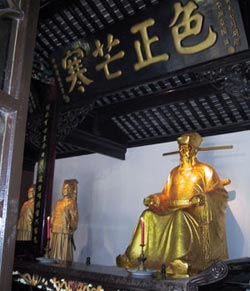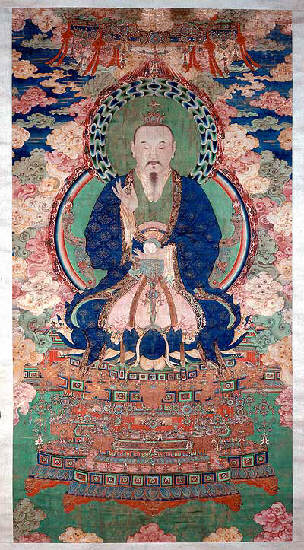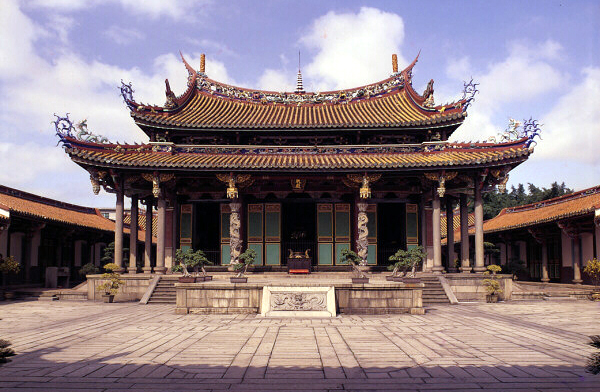 Guan Yu
Guan Yu (關羽)(
160–
219) was a military general under the
warlord Liu Bei during the late
Eastern Han Dynasty and
Three Kingdoms period in ancient
China. He played a significant role in the civil war that led to the collapse of the
Han Dynasty and the establishment of the
Kingdom of Shu, of which Liu Bei was the first
emperor.
In general worship, Guan Yu's is widely referred to as Emperor Guan (關帝), short for his
Taoist title Saintly Emperor Guan (關聖帝君). Temples and shrines dedicated exclusively to Guan Yu could be found in parts of
Mainland China,
Hong Kong,
Macau,
Taiwan, and other places where Chinese congregate. Some of these temples, such as the Emperor Guan Temple in
Xiezhou (解州),
Shanxi, were built exactly in the layout of a palace, befitting his status as an "
emperor".
Guan Yu is revered as Saintly Emperor Guan (
Simplified Chinese: 关圣帝君;
Traditional Chinese: 關聖帝君;
Pinyin:
Gūanshèngdìjūn) and a leading subduer of demons in
Taoism. Taoist worship of Guan Yu began during the
Song Dynasty. Legend has it that during the second decade of the 12th century, the saltwater lake in the present day
Xiezhou County (解州镇) gradually ceased to yield
salt.
Emperor Huizong then summoned Celestial Master
Zhang Jixian (張繼先), thirtieth descendent of Celestial Master
Zhang Daoling, to investigate the cause. The emperor was told that the disruption was the work of
Chi You, a deity of war. The Master then recruited the help of Guan Yu, who did battle with Chi You over the lake and triumphed, whereupon the lake resumed salt production. Emperor Huizong then bestowed upon Guan Yu the title of Immortal of Chongning (崇寕真君), formally introducing the latter as a deity into Taoism.
http://en.wikipedia.org/wiki/Guan_Yu
 Of all the Teochew temples in Singapore and Malaysia, this temple is most unique in terms of layout and roof ornamentation.
Of all the Teochew temples in Singapore and Malaysia, this temple is most unique in terms of layout and roof ornamentation.
































